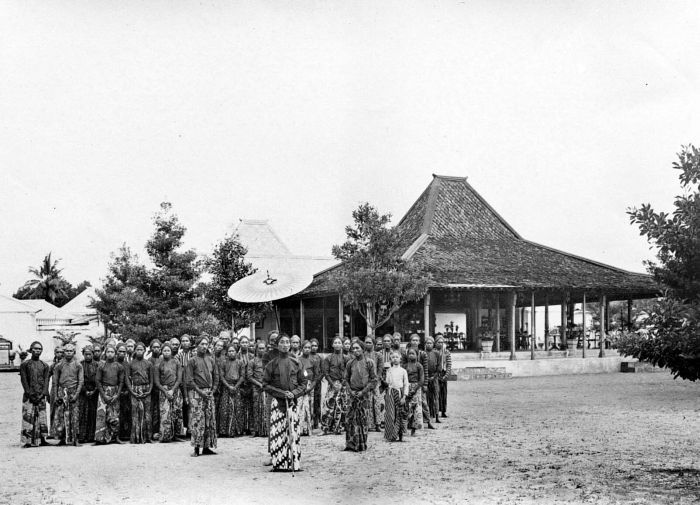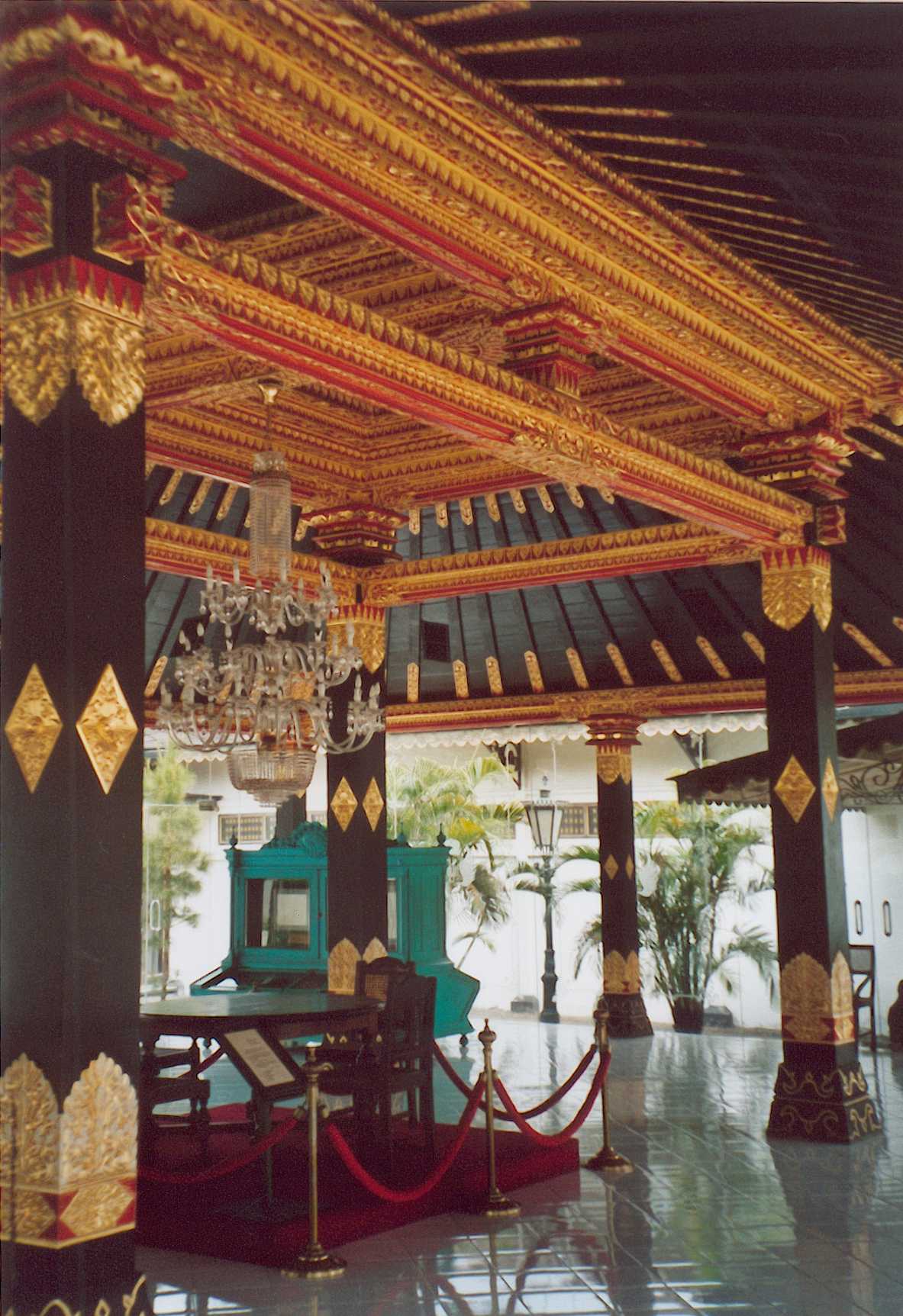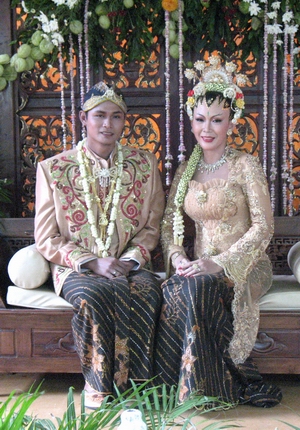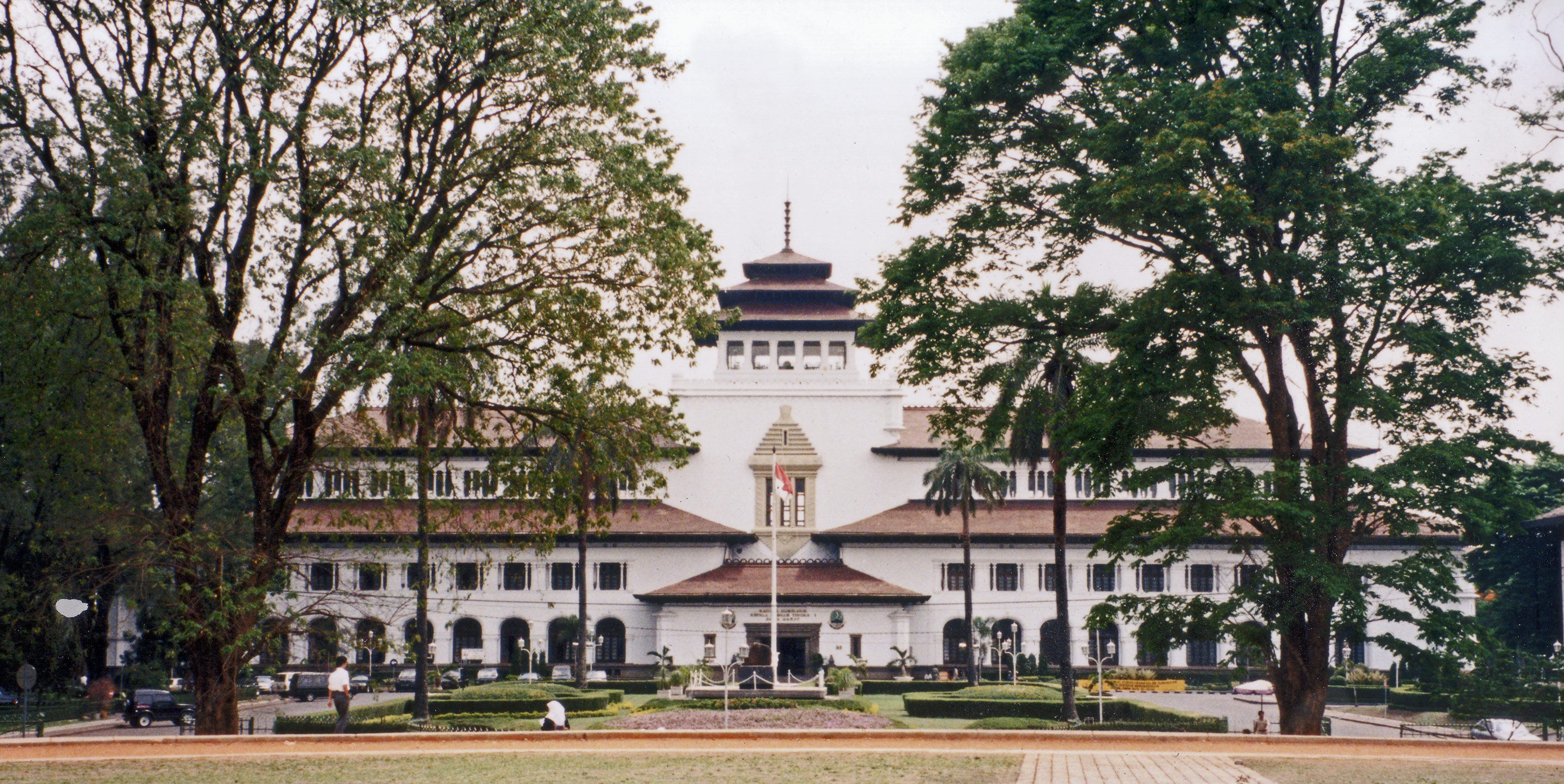|
Joglo
Joglo is a type of traditional vernacular house of the Javanese people (Javanese ''omah''). The word ''joglo'' refers to the shape of the roof. In the highly hierarchical Javanese culture, the type of the roof of a house reflects the social and economic status of the owners of the house; joglo houses is traditionally associated with Javanese aristocrats. Joglo roof can be implemented to a dwelling (''omah'') or a pavilion ('' pendopo''). Structure and architecture The joglo roof is the most complex of all Javanese roof types. Different with the other type of Javanese roof such as the limasan and kampung roof, joglo roof does not use king posts. Joglo roof consists of columns that become higher as it go to the center. The four innermost main house columns are often the tallest, while the outer columns are the lowest. These four innermost house columns support a roof that is the steepest of all type of Javanese roof; almost forming a pyramid, except that it comes to two point ... [...More Info...] [...Related Items...] OR: [Wikipedia] [Google] [Baidu] |
Javanese Culture
Javanese culture is the culture of the Javanese people. Javanese culture is centered in the provinces of Central Java, Yogyakarta and East Java in Indonesia. Due to various migrations, it can also be found in other parts of the world, such as Suriname (where 15% of the population are of Javanese descent), the broader Indonesian archipelago region, Cape Malay, Malaysia, Singapore, Netherlands and other countries. The migrants bring with them various aspects of Javanese cultures such as music, traditional dances and art of shadow play. The migration of Javanese people westward has created the coastal Javanese culture that is distinct from inland Sundanese culture in West Java and Banten. Being the largest ethnic group, the Javanese culture and people influence Indonesian politics and culture, a process sometimes described as Javanisation. Literature Javanese literature tradition is among the earliest and the oldest surviving literature traditions in Indonesia. The trans ... [...More Info...] [...Related Items...] OR: [Wikipedia] [Google] [Baidu] |
Pendopo
A pendhapa or pandhapa ( Javanese: ꦥꦼꦤ꧀ꦝꦥ or ꦥꦤ꧀ꦝꦥ, Indonesian spelling: pendapa, nonstandard spelling: pendopo) is a fundamental element of Javanese architecture unique in the southern central part of Java; a large pavilion-like structure built on columns. Either square or rectangular in plan, it is open on all sides and provides shelter from the sun and rain, but allows breeze and indirect light. The word ''pendhapa'' is cognate to the Sanskrit word ''mandapa'' ("hall"). The Dutch writer Multatuli in his colonial reformist novel '' Max Havelaar'' described the pendhapa thus: "After a broad-brimmed hat, an umbrella, or a hollow tree, a 'pendoppo' icis certainly the most simple representation of the idea 'roof'." Derived from ancient Javanese architectural elements, pendhapa are common ritual spaces primarily intended for ceremony, and also for a purposes such as receiving guests in the compounds of wealthy Javanese, and even as cottage industry work spac ... [...More Info...] [...Related Items...] OR: [Wikipedia] [Google] [Baidu] |
Indonesia
Indonesia, officially the Republic of Indonesia, is a country in Southeast Asia and Oceania between the Indian and Pacific oceans. It consists of over 17,000 islands, including Sumatra, Java, Sulawesi, and parts of Borneo and New Guinea. Indonesia is the world's largest archipelagic state and the 14th-largest country by area, at . With over 275 million people, Indonesia is the world's fourth-most populous country and the most populous Muslim-majority country. Java, the world's most populous island, is home to more than half of the country's population. Indonesia is a presidential republic with an elected legislature. It has 38 provinces, of which nine have special status. The country's capital, Jakarta, is the world's second-most populous urban area. Indonesia shares land borders with Papua New Guinea, East Timor, and the East Malaysia, eastern part of Malaysia, as well as maritime borders with Singapore, Vietnam, Thailand, the Philippines, Australia, Palau, an ... [...More Info...] [...Related Items...] OR: [Wikipedia] [Google] [Baidu] |
Javanese People
The Javanese ( id, Orang Jawa; jv, ꦮꦺꦴꦁꦗꦮ, ''Wong Jawa'' ; , ''Tiyang Jawi'' ) are an ethnic group native to the central and eastern part of the Indonesian island of Java. With approximately 100 million people, Javanese people are the largest ethnic group in Indonesia and the whole Southeast Asia in general. Their native language is Javanese, it is the largest of the Austronesian languages in number of native speakers and also the largest regional language in Southeast Asia. The Javanese as the largest ethnic group in the region have dominated the historical, social, and political landscape in the past as well as in modern Indonesia and Southeast Asia. There are significant numbers of Javanese diaspora outside of central and eastern Java regions, including the other provinces of Indonesia, and also in another countries such as Suriname, Singapore, Malaysia, Egypt, Saudi Arabia, South Africa, Sri Lanka, Yemen and the Netherlands. The Javanese ethnic group ... [...More Info...] [...Related Items...] OR: [Wikipedia] [Google] [Baidu] |
Javanese Traditional House
Javanese traditional house ( jv, ꦲꦺꦴꦩꦃꦠꦿꦝꦶꦱꦶꦪꦺꦴꦤꦭ꧀ꦗꦮ, Omah tradhisional Jawa) refers to the traditional vernacular houses of Javanese people in the island of Java, Indonesia. See also * Indonesian architecture * Rumah adat * Kraton (Indonesia) * List of mosques in Indonesia * Dutch Indies country houses * Kotagede Kotagede (Javanese: ꦏꦸꦛꦒꦼꦝꦺ ''Kuthagedhé'') is a city district (''kemantren'') and a historic neighborhood in Yogyakarta, Special Region of Yogyakarta, Indonesia. Kotagede contains the remains of the first capital of Mataram Sultan ... References Works cited * * * {{Indonesian architecture Rumah adat Javanese culture House types ... [...More Info...] [...Related Items...] OR: [Wikipedia] [Google] [Baidu] |
Pendopo
A pendhapa or pandhapa ( Javanese: ꦥꦼꦤ꧀ꦝꦥ or ꦥꦤ꧀ꦝꦥ, Indonesian spelling: pendapa, nonstandard spelling: pendopo) is a fundamental element of Javanese architecture unique in the southern central part of Java; a large pavilion-like structure built on columns. Either square or rectangular in plan, it is open on all sides and provides shelter from the sun and rain, but allows breeze and indirect light. The word ''pendhapa'' is cognate to the Sanskrit word ''mandapa'' ("hall"). The Dutch writer Multatuli in his colonial reformist novel '' Max Havelaar'' described the pendhapa thus: "After a broad-brimmed hat, an umbrella, or a hollow tree, a 'pendoppo' icis certainly the most simple representation of the idea 'roof'." Derived from ancient Javanese architectural elements, pendhapa are common ritual spaces primarily intended for ceremony, and also for a purposes such as receiving guests in the compounds of wealthy Javanese, and even as cottage industry work spac ... [...More Info...] [...Related Items...] OR: [Wikipedia] [Google] [Baidu] |
Kraton (Indonesia)
Kraton or keraton ( jv, ꦏꦿꦠꦺꦴꦤ꧀ or ꦏꦼꦫꦠꦺꦴꦤ꧀) is a type of royal palace in Java, Indonesia. Its name is derived from the Javanese ''ka-ratu-an'', meaning residence of the ''ratu'', the traditional honorific title for a monarch. In Java, the palace of a prince is called ''pura'' or ''dalem'', while the general word for palace is ''istana'', identical to Malay. Specific palaces Kraton that function as the residence of a royal family include: ;Yogyakarta (Jogja) region: *Kraton Ngayogyakarta Hadiningrat (Palace of Sultan Hamengkubuwono). *Pura Pakualaman (Palace of Adipati Pakualam). ;Surakarta (Solo) region: * Kraton Surakarta Hadiningrat (Palace of Susuhunan Pakubuwono). * Pura Mangkunegaran (Palace of Adipati Mangkunegara). ;Cirebon area: * Kraton Kasepuhan (Palace of Sultan Sepuh). * Kraton Kanoman (Palace of Sultan Anom). * Kraton Kacirebonan (Palace of Sultan Cirebon). * Kraton Kaprabonan ( id) (Palace of Sultan Prabon). Historical palaces ... [...More Info...] [...Related Items...] OR: [Wikipedia] [Google] [Baidu] |
Grand Pendopo, Mangkunegaran Palace
Grand may refer to: People with the name * Grand (surname) * Grand L. Bush (born 1955), American actor * Grand Mixer DXT, American turntablist * Grand Puba (born 1966), American rapper Places * Grand, Oklahoma * Grand, Vosges, village and commune in France with Gallo-Roman amphitheatre * Grand Concourse (other), several places * Grand County (other), several places * Grand Geyser, Upper Geyser Basin of Yellowstone * Grand Rounds National Scenic Byway, a parkway system in Minneapolis, Minnesota, United States * Le Grand, California, census-designated place * Grand Staircase, a place in the US. Arts, entertainment, and media * ''Grand'' (Erin McKeown album), 2003 * ''Grand'' (Matt and Kim album), 2009 * ''Grand'' (magazine), a lifestyle magazine related to related to grandparents * ''Grand'' (TV series), American sitcom, 1990 * Grand piano, musical instrument * Grand Production, Serbian record label company * The Grand Tour, a new British automobile sh ... [...More Info...] [...Related Items...] OR: [Wikipedia] [Google] [Baidu] |
Colonial Architecture Of Indonesia
The colonial architecture of Indonesia refers to the buildings that were created across Indonesia during the Dutch colonial period, during that time, this region was known as the Dutch East Indies. These types of colonial era structures are more prevalent in Java and Sumatra, as those islands were considered more economically significant during the Dutch imperial period. As a result of this, there is a large number of well preserved colonial era buildings that are still densely concentrated within Indonesian cities in Java and Sumatra to this day. In the rest of the archipelago, there is also a sizeable amount of old Dutch East India Company (VOC) era forts and warehouses that were built during the Dutch colonial period of Indonesia, particularly around the Maluku Islands and Sulawesi, though these tend to be more scattered about and in less dense concentrations compared to those found on Java and Sumatra. The three styles of colonial architecture in Indonesia are: * Old Indie ... [...More Info...] [...Related Items...] OR: [Wikipedia] [Google] [Baidu] |
Nyai Roro Kidul
''Kanjeng Ratu Kidul'' Sundanese: ᮑᮤ ᮛᮛ ᮊᮤᮓᮥᮜ᮪, Nyai Rara Kidul) ( Javanese: ꦚꦻꦫꦫꦏꦶꦢꦸꦭ꧀, Nyi Rara Kidul) ( Balinese: ᬜᬶᬭᭀᬭᭀᬓᬶᬤᬸᬮ᭄, Nyi Rara Kidul) is a supernatural being in Indonesian folklore. She is the Queen of the Southern Sea (Indian Ocean) in Sundanese and Javanese mythology. In an older Sundanese folklore, she is a beautiful princess named Dewi Kadita who comes from the Sundanese kingdom of Pajajaran. According to Javanese beliefs, she is also the mythical spiritual consort of the Sultans of Mataram and Yogyakarta, beginning with Senopati and continuing to the present day. Names Nyai Loro Kidul spirit has many different names, which reflect the diverse stories of her origin in different sagas, legends, myths and traditional folklore. The Sundanese folk tale tells of Dewi Kadita, the beautiful daughter of the Sunda Kingdom in Western Java. Other names include Ratu Laut Selatan ("Queen of the Sout ... [...More Info...] [...Related Items...] OR: [Wikipedia] [Google] [Baidu] |
Dewi Sri
Dewi Sri or Shridevi ( Javanese: ꦢꦺꦮꦶꦱꦿꦶ, Balinese: ᬤᬾᬯᬶᬲ᭄ᬭᬶ, Dewi Sri)(Sundanese: ᮑᮄ ᮕᮧᮠᮎᮤ ᮞᮀᮠᮡᮀ ᮃᮞᮢᮤ, Nyai Pohaci Sanghyang Asri) is the Javanese, Sundanese, and Balinese Hindu Goddess of rice and fertility, still widely worshiped on the islands of Java, Bali and Lombok, Indonesia. The cult of the rice goddess has its origin in the prehistoric domestication, development and propagation of rice cultivation in Asia, possibly brought by Austroasiatic or Austronesian population that finally migrated and settled in the archipelago. Similar but slightly different rice spirits mythologies are widespread among Indonesian ethnicities and also neighboring countries. The mythology of Dewi Sri is native to Javanese and Sundanese, also Hinduism in the archipelago since early as the first century. She was equated with the Hindu goddess Shri Lakshmi, and often regarded as an incarnation or one of her manifestations. The g ... [...More Info...] [...Related Items...] OR: [Wikipedia] [Google] [Baidu] |





